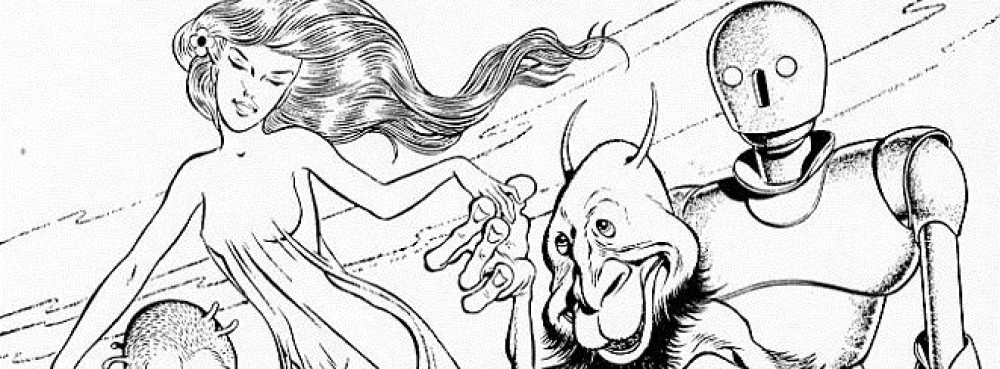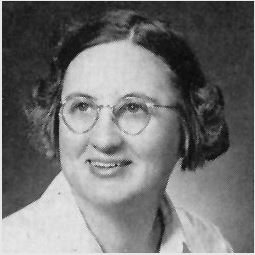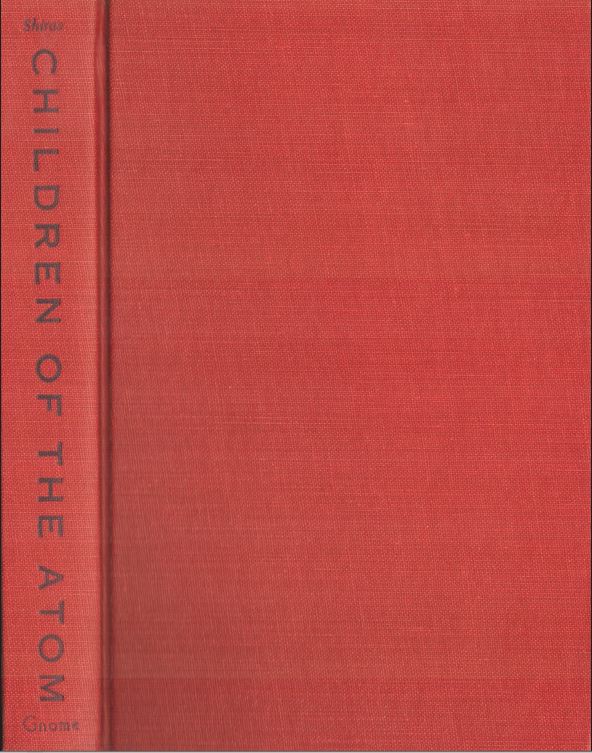Comments
The writing career of Wilmar H. Shiras (1908-1990; the H stands for House, her maiden name) is perhaps the single oddest story in Golden Age f&sf, maybe ever. Having dropped out of Boston University at 18 when she married, she rethought her life after World War II and, as part of a career resurrection at the age of 40, decided to send off a novelette she had originally put in a drawer. The story starred Timothy, born a super-genius because of radiation effects from an atomic plant explosion. Published in the November 1948 Astounding, “In Hiding” was that rare first story that was also an instant classic. It appeared almost annually in anthologies and was named as one of the best longer stories before 1965 by the Science Fiction Writers of America when they created their Science Fiction Hall of Fame. Shiras added two sequels in 1949 and 1950. A forgotten little tale appeared in the November 1952 Science Fiction Adventures. And that was it. Her total production in the field, four stories. (Four more short stories appeared in the early 1970s as sort of a coda.)
Mrs. Shiras had the excuse of being busy with other things. She returned to college and did translations for publishers, while juggling the myriad chores required of keeping a house filled with five children. (In 1955, she graduated from College of the Holy Names, winning a place in Kappa Gamma Pi, the National Honor Society of Catholic Women. Later researchers found that “In Hiding” wasn’t her first publication. She had earlier written Slow Dawning, published in 1946 as by Jane Howes, called by one paper as “of special interest to the devout Christian.)
That left her zero time for science fiction. Somehow, though, Marty Greenberg got her to add two more novelettes to bulk out the tale of the increasingly numerous super-genius children to book length, allowing him to slap on it the false label of novel, though that was absolutely commonplace for series of connected individual stories at the time. Like the original stories the book was a sensation. (Shiras got the cover for her third story, achieving the impossible feat of an Astounding cover depicting a little girl).
F&sf fans in general felt like the super-bright children dismissed by their uncomprehending parents that Shiras lovingly depicted, and took the book to heart more than any other metaphor since A. E. van Vogt’s Slan. (Ironically, studies started appearing that same year as the book showing “little or no harmful effects” on children born to parents who survived the Japanese atomic bombs. Those studies made not the slightest dent on the hundreds of additional stories in various media proclaiming the mutating power of radioactivity.)
A woman writing science fiction was still unusual enough to create attention, especially to the mainstream world. A woman addressing the fears of the nuclear age by using science fiction to depict an optimistic tale about mutant children was electrifying. All children seem like mutants to their parents – they inhabit a changed world that they will change even more. F&sf could explore that idea better than any other type of fiction and its ability to literalize possible futures spoke to the 1950s. The Oakland Tribune reviewed the book alongside another equally remarkable novel by an outsider, Vercors’ You Shall Know Them. Both seemed to portend the possibilities of where the field could go if treated as serious fiction. (And if all publishers promoted paperbacks this strongly.)
The Tribune was Shiras’ hometown paper. It not only reviewed the book, but placed a long article on her next to it, which is the source of most of what we know about Shiras, although it left out her publishing Slow Dawning, presumably because that spoiled the fairy tale of first authorship.
Gnome Notes
Greenberg went out of his way to ensure that readers knew that Wilmar was a woman’s name.
Kirkus Reviews gave the expected publication date as June 15, 1953.
Contents and original publications
• “In Hiding,” (Astounding Science Fiction, November 1948).
• “Opening Doors” (Astounding Science Fiction, March 1949).
• “New Foundations” (Astounding Science Fiction, March 1950).
• “Problems” (original to this volume).
• “Children of the Atom” (original to this volume).
Reviews
Nancy Nye, Oakland Tribune, July 12, 1953
Children of the Atom” marks another step in science fiction’s coming-of-age. Its interest and palatability as adult intellectual fare are further enhanced by a deliberately restrained and non-sensational style, emphasizing the widening gap between logical development from an unreal but plausible premise and the uninhibited gadgetry of conventional “space opera.”
Groff Conklin, Galaxy Science Fiction, December 1953
The book now has a story line and richness of character development that lifts it out of the realm of the standard “supergenius” tale. Unreservedly recommended.
Bibliographic Information
Children of the Atom, by Wilmar H. Shiras, 1953, copyright registration 15May53, Library of Congress Catalog Card Number not given [retroactively 53-10534], title #32, back panel #23, 216 pages, $2.75. 5000 copies printed. Hardback, dark red cloth, spine lettered in black. Jacket Design by Frank Kelly Frease [typo for Freas]. “FIRST EDITION” on copyright page. Manufactured in the U.S.A. by H. Wolff. Back panel: 25 titles. Gnome Press address given as 80 East 11th Street, New York 3.
Variants
None known.
Images






